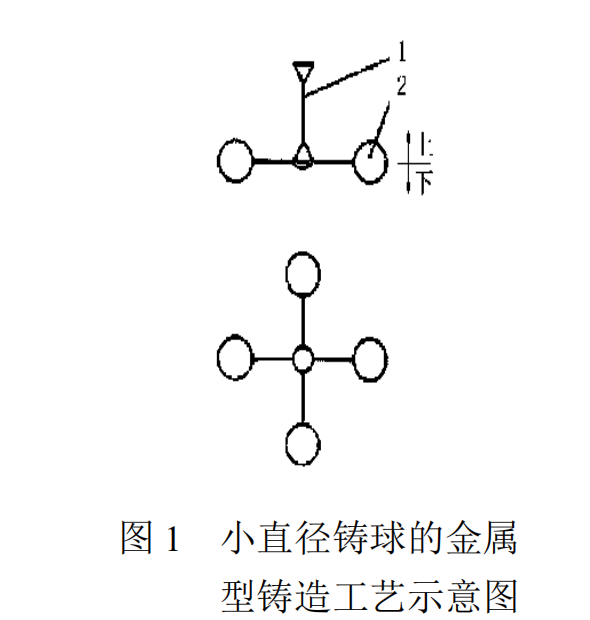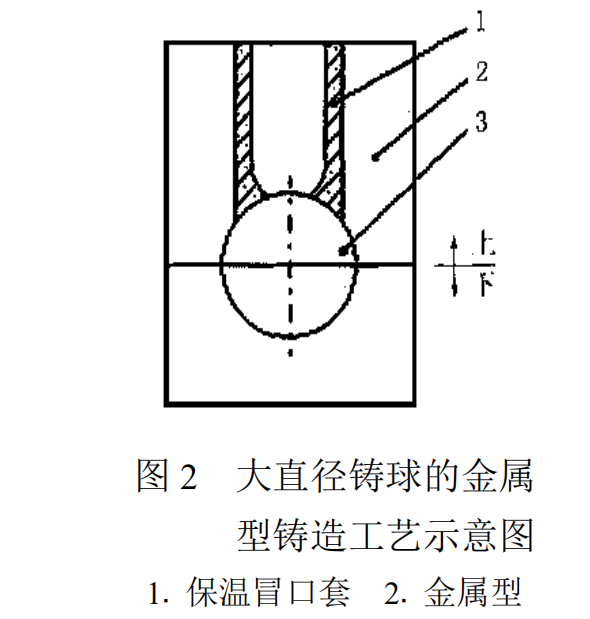Trial-manufacture and application of as-cast low chrome alloy grinding balls (2)
The chemical composition of the alloy grinding balls
According to the requirements of mechanical properties, after repeated tests, the following chemical composition and scope have been designed:
Carbon is the basic element that affects its structure and properties and the important factor that affects the properties of alloy grinding balls. With the increase of carbon content, the EUTECTIC carbides increased and distributed in a network. Although the hardness, wear-resistance, and wear resistance could be improved, the relative toughness (σw × f) and impact toughness (αk) decreased significantly. Under the condition of high carbon, a large quantity of continuous ledeburite is serious, which breaks the Matrix. Under the condition of impact wear, a large number of carbides fall off and increase wear. The results show that cast balls’ carbon content for a large ball mill should be 2. 3% ~ 3. 3%.
Silicon With the increase of silicon content, the pearlite matrix structure is coarsened, and phase pair toughness (W × F) is decreased, which should be controlled in the range of 0.6 % ~ 1.2 %.
Manganese Form austenite elements. Excessive manganese content will increase the austenite in the tissue. Considering the need for deoxidization and desulfurization, the content is set as 0.6 % ~ 1.0 %.
Chrome It is one of the main alloying elements. Chrome can change carbides into alloyed cementite (FE CR)3C and increase Carbides’ microhardness, which shows that the wear resistance of cast balls is increased macroscopically. All the factors were synthesized, and its content was 1. 5% ~ 2. 5% is OK.
Copper The degree of hardness and relative toughness (W × F) can be improved with proper copper content, and the hardness difference between the surface and the core of the cast ball can be reduced within the control range of 0.6 % ~ 1.5 %.
Re and micronutrient After RE inoculation, the microstructure of low chromium white cast iron can be refined; the carbide distribution can be improved, the impact toughness and wear resistance can be controlled at 0. 1% ~ 0. Within 15%. V, TI, Mo are trace alloy elements. They dissolve in the Matrix, forming, high hardness of carbon and nitrogen compounds and improving the Matrix micro-hardness, that is, increasing the wear resistance of cast ball; at the same time, there is the role of refining grain.
Sulfur and phosphorus Harmful elements, brought in by raw materials, the less the better, when found exceeding the standard, should take appropriate measures
In a word, the chemical composition of as-cast low chromium alloy ball was determined on the basis of repeated experiments and industrial trials. 3% ~ 3. 3% C, 0. 6% ~ 1. 2% SI, 0. 6% ~ 1. 0% MN, 1. 5% ~ 2. 5% CR, 0. 6% ~ 1. 5% cu, ≤0. 1% P, ≤0. 1% S, trace Re and V, T, Mo..
1.4Determination of production process plan of casting ball
From the composition range, it can be seen that the cast ball is made of hypoeutectic white cast iron, and there will be a tendency of shrinkage porosity in the solidification process. Therefore, the feeding function of the gating system must be strengthened to ensure the full and smooth feeding of liquid iron, that is to say, should achieve ΣW补 ≥ΣW缩 、 ΣF内 <ΣF直 .
In order to achieve high hardness and toughness, the inner structure of the alloy grinding balls must be densified and refined, and there is no continuous and reticulate carbide in the microstructure. Therefore, it is necessary to strengthen the solidification and crystallization process, increase the degree of supercooling, increase the cooling rate of liquid iron, realize pouring, solidification and feeding while pouring, make the structure of cast ball compact and Grain Fine, and restrain the growth and networking of carbide to the greatest extent, and order their distribution. In order to achieve this goal, it is decided to adopt the technology of permanent mold casting with insulating risers and feeding.
Document [2] points out that under the same conditions, the properties of αk, σw and HRC of the ball cast in the permanent mold are higher than those cast in a sand mold, especially the impact toughness is increased by 26% on average, it provides a condition for the casting ball to be used as cast, which has been proved by both theory and practice.
1.4.1 The production process plan for the small size of the alloy casting balls
Small-diameter balls are made by metal mold casting, horizontal parting, one type with many balls (usually 4 ~ 8), and common clay sand is used in the pouring and feeding system. The gating system is composed of Gate Cup, sprue and Ingate, and has a riser’s feeding function. The casting process diagram is shown in Fig. 1.
1.4.2 The production process of the big size of the alloy grinding balls
For large diameter ball casting, the casting process of adding metal mold, heat preservation riser, and a single ball of one type should be adopted. Horizontal parting, insulated riser made of Hollow Bead (floating bead) in advance, installed on the metal mold when pouring in the box, can be used (Fig. 2). Simultaneously, thermal insulation riser directly filled, when the pouring system, conducive to set, in heat, strengthen feeding.
From 60 ~ 125mm casting grinding balls, the average casting technology, the yield rate is 85%, can ensure the casting ball’s inner compact, no shrinkage porosity, and other casting defects.
Previous: Trial-manufacture and application of as-cast low chrome alloy casting balls (1)
Next: Trial-manufacture and application of as-cast low chrome alloy casting balls (3)



